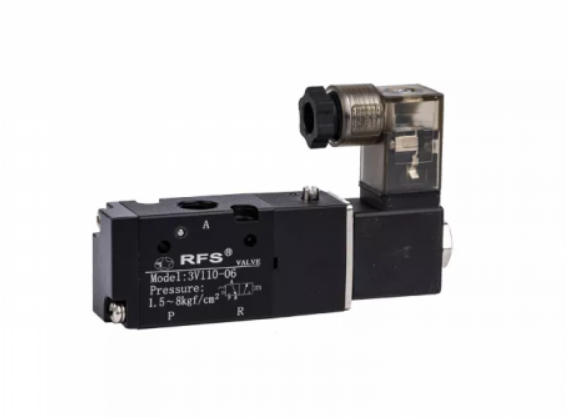May. 15, 2024
Directional control valves are critical components in hydraulic and pneumatic systems, dictating the flow of fluid within these systems. They are instrumental in guiding and managing the direction of fluid flow, ensuring the efficient operation of machinery and equipment. This comprehensive guide explores the various types of directional control valves, their functionalities, and their applications in different industries.

Directional control valves control the flow of hydraulic fluid or air in a system, determining the path that the fluid takes. They play a crucial role in the operation of hydraulic machinery, helping to control the start, stop, and direction of fluid flow. The performance and efficiency of hydraulic systems heavily depend on the type of directional control valve used.
Directional control valves can be classified based on various criteria, including the number of positions, the number of flow paths (ways), and the method of actuation.
Two-Position Valves
Two-position valves have two distinct positions, typically open and closed. These valves are used in applications where a simple on/off control is sufficient. They are commonly found in basic hydraulic systems that do not require complex flow control.
Three-Position Valves
Three-position valves have three positions: typically open, closed, and one intermediate position. These valves offer more control over fluid flow, making them suitable for applications that require precise fluid control.
Two-Way Valves
Two-way valves have two ports: an inlet and an outlet. They allow fluid to flow in one direction when the valve is open. These valves are used in applications that require simple on/off control of fluid flow.
Three-Way Valves
Three-way valves have three ports and are used to direct fluid flow between different paths. These valves are essential in applications where the direction of fluid flow needs to be changed.
Four-Way Valves
Four-way valves have four ports and are commonly used in double-acting cylinders or actuators. They can direct fluid flow in multiple directions, making them ideal for applications requiring bidirectional control.
Five-Way Valves
Five-way valves are an extension of four-way valves, typically used in pneumatic systems. They offer additional control and are used in applications requiring complex flow paths.
Manual Valves
Manual directional control valves are operated by hand. They are straightforward to use and do not require external power sources. These valves are suitable for applications where human intervention is acceptable.
Mechanical Valves
Mechanical directional control valves are actuated by mechanical means, such as cams, levers, or rollers. They are used in applications where the valve needs to be operated in response to the movement of machinery.
Hydraulic Valves
Hydraulic directional control valves use hydraulic fluid pressure for actuation. They are highly efficient and are used in systems where precise control of fluid flow is required.
Related links:Pneumatic Valves
Pneumatic directional control valves are actuated by compressed air. They are fast and efficient, making them ideal for applications requiring rapid response times.
Solenoid Valves
Solenoid directional control valves are electrically actuated. They use an electromagnetic solenoid to move the valve spool. These valves are widely used in automated systems where electronic control is necessary.
Spool valves are one of the most common types of directional control valves. They consist of a cylindrical spool that moves within a valve body to direct fluid flow. Depending on the position of the spool, different flow paths are opened or closed.
Industrial Machinery: Used in hydraulic presses and machine tools.
Mobile Equipment: Found in construction and agricultural machinery.
Automotive Systems: Integral to the operation of automatic transmissions.
Poppet valves use a poppet, which is a conical or ball-shaped element, to block or allow fluid flow. They are known for their tight sealing capabilities and are often used in applications requiring minimal leakage.
Hydraulic Systems: Used in high-pressure hydraulic systems.
Pneumatic Systems: Found in compressed air systems where quick actuation is necessary.
Medical Devices: Used in precise control of fluid flow in medical equipment.
Rotary valves control fluid flow by rotating a cylinder with ports that align with different flow paths. They are often used in applications requiring smooth and continuous control of fluid direction.
Chemical Processing: Used in the precise mixing and flow control of chemicals.
Food and Beverage Industry: Essential in the automated handling of liquids and pastes.
HVAC Systems: Found in heating, ventilation, and air conditioning systems for regulating airflow.
Check valves, also known as non-return valves, allow fluid to flow in one direction only. They prevent backflow, ensuring that the fluid flows in the intended direction.
Pump Systems: Prevent backflow and maintain prime in pumps.
Water Supply Systems: Ensure consistent water flow and prevent contamination.
Oil and Gas Industry: Used in pipelines to prevent reverse flow of fluids.
Directional control valves are essential components in hydraulic and pneumatic systems, providing precise control over fluid flow. Understanding the different types of directional control valves and their specific applications is crucial for selecting the right valve for any system. By considering the various factors involved in choosing a valve, industries can ensure the efficient and reliable operation of their machinery and equipment.
Related links:146
0
0
All Comments (0)
If you are interested in sending in a Guest Blogger Submission,welcome to write for us!
Comments